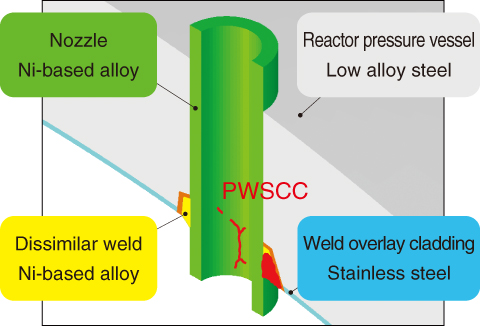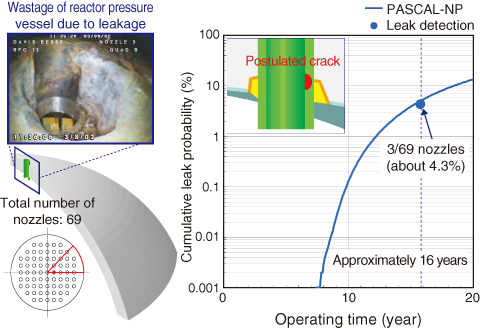
Fig.2-7 Schematic of PWSCC at a vessel head penetration

Fig.2-8 Case study for leakage due to PWSCC at the Davis-Besse nuclear power plant
During long-term operation, primary water stress corrosion cracking (PWSCC) was detected at dissimilar metal welds of Ni-based alloys at vessel head penetration of the pressurized water reactors (PWRs) (Fig.2-7).
Some features of PWSCC differ from those of SCC reported at piping joints of primary loop recirculation system in boiling water reactors (BWRs), e.g., PWSCC initiates and grows in Ni-based alloys at geometrically complicated welds.
Some factors related to PWSCC, such as crack initiation time, crack growth rate, and residual stress distribution, have large scatter.
To account for this scatter, we developed a probabilistic fracture mechanics (PFM) analysis code PASCAL-NP to assess the structural integrity of dissimilar metal welds subjected to PWSCC.
PASCAL-NP contains functions that describe crack initiation and crack growth and evaluate failures for various patterns of crack locations and orientations at geometrically complicated dissimilar metal welds, including NiSCC in a BWR. Using a Monte Carlo approach and considering the scatter described above, this code evaluates the probabilities of failure for events such as leakage and break of components.
Fig.2-8 shows the results of a case study on leakage near the vessel head penetrations at the Davis-Besse nuclear power plant, which suffered from PWSCC. The analytical cumulative leak probability exceeds 5% after 16 years. These PFM analysis results are consistent with the leak detection data, which provides about 4.3% probability (i.e., 3 of 69 leaks were detected).
PFM is expected to be a rational and useful method to estimate failure probabilities due to unexperienced events, to assess risks considering aging degradation of nuclear components, and to develop a plan of risk-informed in-service inspection. To advance the assessment of structural integrity, we continuously improve PASCAL-NP by incorporating the latest knowledge.